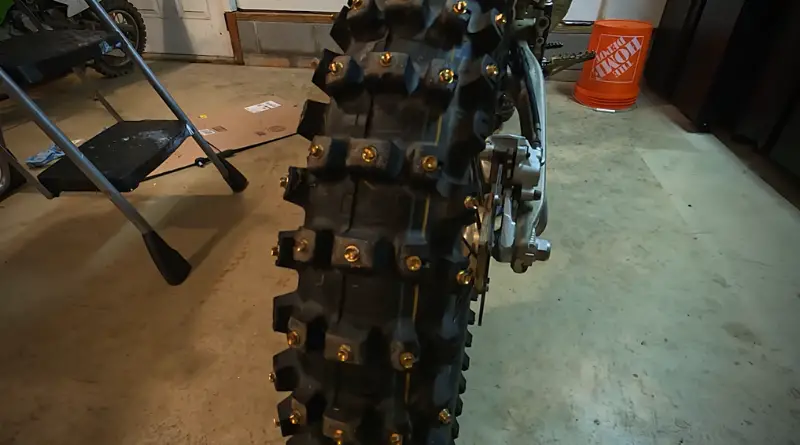In case you were wondering about the performance of studded tires on dry pavement, you came to the right place. We all know that studded tires are great when it comes to riding on icy roads, but do they work on dry pavement?

Keep on reading to find out! (Spoiler alert: we’ll also let you in on a little detail about the best-studded dirt bike tires you can opt for.)
Studded Tires on Dry Pavement: Stupid Idea?
Yes, using studded tires on dry pavement is definitely not the best idea. Not only is it risky, but it’s also actually quite annoying as well.
For starters, If you drive studded tires on dry pavement on a regular basis, the tire tread will wear out a lot faster. While driving on a clear road, studded tires actually lose traction since the tread block creates less connection with the dry pavement.
This can also influence rainy weather driving or driving on sludge because the tread blocks try to funnel off the water. It’s most obvious while braking on a slippery, chilly road pavement in the absence of ice or snow. Which means studded tires typically hinder rather than aid city and suburban inhabitants.
Keep on reading to find out if studded tires are the GOAT or just overkill!
Are Studded Tires Overkill?
Well yes, we’d say they definitely are. We know studded tires are usually put on a high pedestal for winter driving essentials, but in most conditions, studded tires are definitely more of an overkill.
In some states, like Oregon, it’s actually against the law to use studded tires when specific road conditions aren’t met. And that’s not only to protect the drivers but also the roads because studded tires usually lead to roadway rutting and pavement damage.
Then there’s the noise, the incessant clicking of the studs on the pavement that accompanies studded tires – and the extra cost of installing studs to a fresh set of tires or buying pre-studded ones.
Add to that fine you’d have to pay for driving with studded tires on dry pavement during the summer, and you’d be paying a whole lot more than you bargained for.
Want to find out if studded tires are for you or when you should actually be settling for a pair? Read on to find out!
When should you put studded tires on?
If you live in an area where there is heavy snow and icy road conditions most of the year, studded tires are for you! Although you should try to choose studs besides steel, such as tungsten-carbide, so they don’t wear out in a single season.
If you live in a city where it occasionally snows, you might only sometimes benefit from the extra grip provided by studded tires, and even then, only if you can get to the interstate before the morning plowing. The rest of the time, you’ll have to cope with studded tires’ increased noise and cost, impaired braking, road holding, and lower traction.
So basically, make sure you keep in mind the weather and road conditions of your area, the cost and life of the studded tires you choose, and the noise aspect before making any decision. But mostly, make sure studded tires are actually legal in your area before driving with them!



